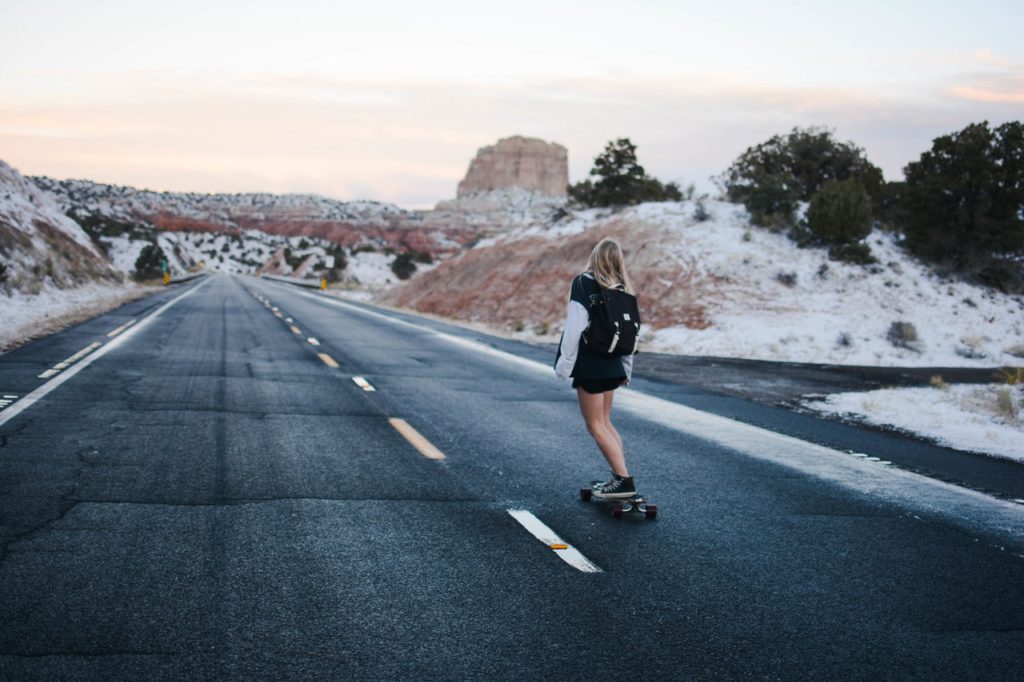The thing about daring sports is that they keep you excited to try new ones. Almost a couple of months into the new year, and why not take up a new challenge? This time, learn the art of skateboarding.
It is a thrilling, independent sport that requires little to no contact with others. It also gives you an alternative means of transportation. Give it a shot, and it may be an unforgettable experience.
The Skateboarding Starter Pack
Before learning the ropes, there is quite a bit of equipment you need to prepare. These are essentials that will help you safely and efficiently learn how to skateboard.
Skateboard
The large variety of skateboards in the market may make your first trip to the skate shop intimidating. As a beginner, we’ve made it simple with a checklist of parts you need:
- Skate Deck (around 8 to 8.5 inches in width)
- Grip Tape
- Trucks (one pair)
- Wheels (four; moderate hardness)
- Bearings (four pairs)
When you’re starting, you want to look for a board that keeps you stable. Wider decks usually provide this. They may also be a little more difficult to flip, but for now, your priority is learning how to glide smoothly.
You can make it more exciting by decorating your board. Spray paint, stickers, and stencils are popular choices in doing an art project out of your skateboard.
A Practice Ramp
There may not be many skate ramps where you live, so the best solution is to build one at home. You save a lot of time by leaving it to experts in metal-fabricating services who can create your ramp’s basic structure and surface. A personal ramp helps you perfect your stance and learn how to push and turn, among other basics.
Skate Shoes
This might seem like a minor concern, but the appropriate footwear avoids many injuries. For skateboarding, you need flat shoes with a good grip. Choose a pair that stays comfortable while you skate.
Shoes are also a part of how skateboarders express their style. There is a wide range of brands that caters to the skateboarding folk, so you do not lack in options and designs.
Protective Gear
Helmets and elbow pads may not exactly look “cool,” but it also isn’t cool to come home with scars and bruises. While in the beginner stage, take these safety precautions to ensure that you will have little to no interruptions while learning.
Once you’ve gotten a little better, you can let the helmet go in favor of snapbacks and beanies. You can see it as a rite of passage in joining the ranks of more experienced skateboarders.
Skate Tools
Keep your board in tip-top shape by doing regular maintenance. Purchase a skateboard tool for making adjustments or tightening any loose bits on your board. Having a durable skateboard tool will save you many trips to the skate shop to have your board repaired or reassembled.

How to Practice
Now that your skateboarding essentials are ready, it’s time to put them to good use. There is no single approach to getting started, but these are few helpful tips that can enrich your learning experience.
Watch videos.
Thankfully, the digital age has made it possible to learn the basics and even different tricks with just a click of the mouse. Visit YouTube to find tutorials and demos from experts, whether about learning new techniques or repairing your board.
You can follow skateboarding influencers and online communities to stay updated on trends and news. There is no shortage of these on Instagram. Take advantage of these resources to make the most of your learning journey.
Do some stretching and exercises.
A fitness routine gives you good control of your body. Good control of your body makes it easier to maneuver your skateboard. Easily maneuvering your skateboard helps you pick up tricks faster.
If you want to improve, you need to stay healthy and flexible. Simple acts such as properly stretching before hopping on your board can prevent many injuries that could hamper your training.
Use your board at home.
Besides going on your ramp to practice tricks, you can also improve execution by using your board indoors. First, remove your trucks and wheels. Then lay your board down on the carpet before stepping on it.
This kind of board practice will help you try simple flips with minimal risks. It also gives a basic feel of specific techniques before doing the real thing.
As you maximize your on- and off-board time, you will find yourself easing into a rhythm with your skateboard. Stay determined and grow more in sync with your board, and you’ll be doing kickflips in no time.

